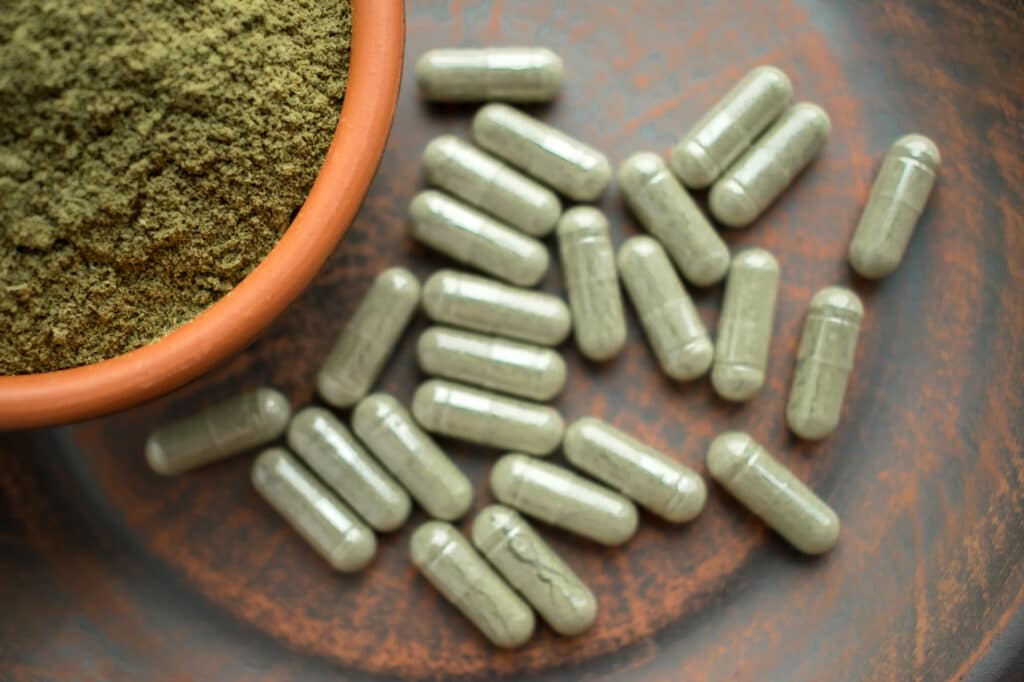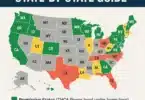While you would think most industries would jump at the chance to operate in an unregulated market, where they can do whatever they want, it seems that model doesn’t work for everyone. Companies who are trying to be honest and actually have some integrity in their products are being overshadowed by an influx of fake, adulterated, and sometimes dangerous products that are infiltrating the market, and casting a bad light on the industry as whole.
As a result, the American Kratom Association along with several individual companies are requesting help in the form of government regulation to work on getting sketchy products off the shelves.
What is Kratom?
Kratom (Mitragyna speciosa) is a flowering evergreen tree related to the coffee plant. It is indigenous to Southeast Asia but has been gaining popularity in western cultures for its stimulating and pain-relieving effects. Kratom is used both recreationally and therapeutically, and just like cannabis, it’s incredibly controversial. Quite a few studies have noted the pharmaceutical potential of Kratom. Kratom is made up of dozens of alkaloids, compounds which are known to hold medicinal value and have been studied independently for decades.
Alkaloids are a class of basic, naturally occurring organic compounds that contain at least one nitrogen atom. They are produced by a large variety of organisms including bacteria, fungi, plants, and animals and can be purified from the crude extracts of these organisms by acid-base extraction, or solvent extractions followed by silica-gel column chromatography. Alkaloids have a wide range of pharmacological activities and there is a lot of existing research to back this up.
The most abundant alkaloid in Kratom is mitragynine, and for decades it was also believed to be the most potent. Then in 2002, a group of Japanese researchers found a variant called 7-hydronitragynine. This minor compound is extremely potent, more powerful than morphine, and despite being found only in trace amounts, it’s responsible for most of kratom’s pain-fighting properties. Further research has determined that both alkaloids act as partial opioid receptor agonists by activating the supraspinal mu- and delta- opioid receptors.
Kratom effects vary greatly based on the dosage. Low doses result in stimulant effects, whereas high doses produce sedative, opiate-like effects. Typically, the leaves are crushed then smoked, brewed in a tea, or used in capsules. It’s still used widely in Southeast Asia, from where it originates, and there it is referred to as thang, kakuam, thom, ketum, and biak. In the US, it’s simply known as Kratom, and while it’s still a bit of fringe product, it is growing in popularity here as well.
Is kratom legal?
The short answer, it’s complicated. Although it’s technically legal at the federal level, they way it’s usually marketed is illegal because the FDA has not approved kratom for any specific use. So selling it as a random smoke shop item is fine, but selling it and saying it can help with pain and boost energy is not allowed.

Regardless, it can be found everywhere from convenience stores and gas stations, wellness stores, smoke shops, and the world wide web, so as much as the FDA wants to say it has no therapeutic value, that’s not stopping people from using it. As such, the US Drug Enforcement Agency (DEA) has been trying to add kratom the Schedule I list of controlled substances (like cannabis which they say is dangerous, but not cocaine which is safer as a Schedule II); albeit, unsuccessfully.
Their position has been met with resistance from industry stakeholders, researchers, and consumers alike. In August 2016, the DEA attempted to temporarily reclassify kratom, but due to public demonstrations, petitions, and calls by Congress to overrule their decision, they changed their tune and retracted the reclassification in October 2016, only 2 months later.
Now, individual states are beginning to make their own laws regarding kratom use. Similar to how states have been granted the authority to regulate cannabis use, despite it going against federal regulations, states are taking similar actions to either protect or prohibit kratom.
We also have the Kratom Consumer Protection Act (KCPA), a bill drafted by the American Kratom Association, that aims to progressively regulate the US kratom industry. The act is currently under review by several state governments, and the Kratom association is attempting to get more states to adopt better kratom policies. Although this act has been in the works for years, it has not been covered extensively by the mainstream media.
The bill addresses all topics relating to the growing kratom industry, such as: cultivation, manufacture, distribution, medical benefits, sale, possession, use, age limits, testing, labeling, fines and penalties. Overall, the main purpose of the Kratom Consumer Protection Act is to protect customers from shifty companies, and ensure that kratom producers and vendors are only supplying safe, high-quality products that are free of pesticides, heavy metals, fungus, and other contaminants.
As of now, kratom is expressly banned in the following states: Alabama, Arkansas, Indiana, Rhode Island, Vermont, and Wisconsin. Certain cities also prohibit the sale, possession and use of kratom: Oceanside, CA, San Diego, CA, Sarasota, FL, Jerseyville, IL, and Union County, MS.
In a change of pace, the industry requests help from the government
Because the industry is so unregulated, and downright confusing, business owners are facing an onslaught of import alerts, warning letters, and product seizures. All this legal action has those in the kratom industry who are trying to remain honest, crying out for help in the form of government regulation.
In the most recent news, this summer, a jury awarded the family of Florida woman $11 million in a wrongful death suit. According to court documents, the woman died from “acute mitragynine intoxication,” which is one of the primary compounds found in kratom. The 39-year-old woman, who had been using kratom for pain management, collapsed and died while cooking breakfast one morning in June 2021. It was determined that the kratom she was using, from Grow LLC, was the cause, although I couldn’t find anywhere if it was related to mislabeling, improper dosing, tainted product, or user error.

Regardless, the case emphasized to the public that kratom can be dangerous, and that it “produces classic opioid-like effects at high concentrations, such as sedation, nausea, vomiting, addiction, and difficulty breathing, which may be fatal.”
Stories like this have consumers rightfully skeptical, so in response, the American Kratom Association issued a statement requesting the following:
- Urges the FDA to immediately publish product manufacturing standards for kratom products that are sold to consumers and encourage the removal of kratom products that do not contain adequate labeling with recommended serving sizes, product ingredients, and appropriate warnings on conditions of use.
- Until the FDA implements a set of standards to protect consumers, the AKA advises kratom consumers not to purchase or consume kratom products that:
- Have not been certified by an independent third-party lab to be free of dangerous contaminants or contain adulterants that could be dangerous to consume.
- Are offered for sale from a vendor that markets its product with illegal therapeutic claims.
- Do not contain the name of the product distributor so that a consumer can file an adverse event report if required.
- Are delivered in unprofessional packaging, such as zip-close bags, or that have handwritten product information.
“Recent reports of product liability awards for irresponsibly manufactured or marketed kratom products are the direct result of the FDA’s failure to regulate the kratom marketplace and, in some cases, the exploitive behavior of trial attorneys who do nothing to compel the FDA to act responsibly,” said Mac Haddow, the AKA’s Senior Fellow on Public Policy.
“The AKA supports congressional action to compel the FDA to develop and implement a set of standards for the manufacturing and marketing of kratom products to protect consumers in the United States,” he added.
Final thoughts on kratom regulation
Kratom regulation is a confusing topic. It’s similar to the early days of CBD when the government was issuing warning letters to companies who claimed cannabidiol can be used to treat various health conditions. If the government steps in, it’s possible that kratom will become less accessible to consumers, but hopefully it means that the products they do find are safer and more effective.
Hello readers. We’re happy to have you with us at Cannadelics.com; a news source here to bring you the best in independent reporting for the growing cannabis and hallucinogen fields. Join us frequently to stay on top of everything, and subscribe to our Cannadelics Weekly Newsletter, for updates straight to your email. Check out some awesome promos for cannabis buds, smoking devices and equipment like vapes, edibles, cannabinoid compounds, amanita mushroom products, and a whole bunch more. Let’s all get stoned together!







